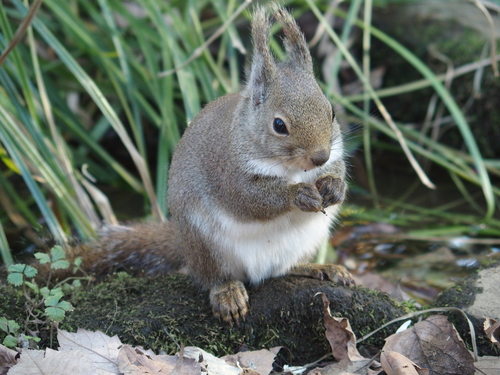
Japanese squirrel
The Japanese squirrel, Sciurus lis, gracefully navigates Japan's temperate forests with its bushy tail and sharp claws. This agile creature not only captivates with its charming appearance but also enriches the ecosystem by spreading seeds, ensuring the growth of its woodland home.
15 years
Lifespan
250.0 - 310.0 g
Weight
Length: 16 - 22 cm; Height: 15 cm
Size
Brown, Grey, Red, White
Color
300 days
Age of Sexual Maturity
60 days
Age of Weaning
Least Concern
Conservation Status
Stable
Population Trend
Characteristics
The Sciurus lis, commonly known as the Japanese squirrel, is a small arboreal rodent native to Japan. It has a bushy tail, sharp claws, and a distinctive greyish-brown fur. Known for its agility, it inhabits temperate forests, where it plays a crucial role in seed dispersal.
Distribution Range of the Japanese squirrel
Sciurus lis, commonly known as the Japanese squirrel, is native to Japan. Its geographical distribution is primarily on the islands of Honshu, Shikoku, and Kyushu.
Japanese squirrel's Habitat
Environmental Conditions
The Japanese squirrel inhabits temperate forests, which can be either deciduous or mixed forests. These areas typically have a moderate climate with distinct seasons, including warm summers and cold winters. The elevation range where they are commonly found can vary, but they are generally present in forested areas with abundant tree cover.
Ecological Niche
Sciurus lis plays a crucial role in its ecosystem as a seed disperser, aiding in forest regeneration. It primarily feeds on seeds, nuts, fruits, and occasionally insects. The species is known for its arboreal lifestyle, spending most of its time in trees. The Japanese squirrel is adapted to a life that involves climbing and jumping through the forest canopy, which provides both food resources and protection from predators.
Copyright @ Nature Style Limited. All Rights Reserved.
 English
English